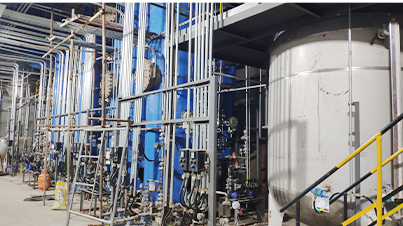Coagulants and Flocculants in Water Treatment Processes and Applications
Understanding Coagulants and Flocculants Key Components in Water Treatment
Water treatment is an essential process that ensures clean and safe drinking water as well as the efficient management of wastewater. Two critical components often used in this process are coagulants and flocculants. While they are sometimes confused due to their similar functions, they play distinct yet complementary roles in the purification of water.
What Are Coagulants?
Coagulants are substances that promote coagulation, the process where small particles clump together to form larger aggregates known as flocs. This is typically the first step in water treatment. Coagulation is essential for removing suspended particles, such as silt, clay, and organic matter, as well as microbial contaminants.
Common coagulants include aluminum sulfate (alum), ferric chloride, and polyaluminum chloride. These chemicals work by neutralizing the charges on suspended particles, allowing them to bond together. The coagulant is added to the water, where it reacts with the impurities. Over time, these impurities begin to form visible clumps that can then be removed from the water, either by sedimentation or filtration.
The Role of Flocculants
Flocculants, on the other hand, are used to enhance the flocculation process, which follows coagulation. Flocculation involves agglomerating the small clumps created during coagulation into larger particles that are easier to remove. Flocculants are typically long-chain polymers that can bridge multiple particles and encourage them to stick together, forming larger aggregates.
In the water treatment process, flocculants are added after the coagulants to facilitate the formation of larger flocs. This step significantly improves the efficiency of sedimentation and filtration processes, making it easier to separate the solid particles from the liquid phase. Common flocculants include polyacrylamides and natural materials like starch and cellulose derivatives.
The Coagulation-Flocculation Process
The coagulation-flocculation process generally involves several steps
1. Rapid Mixing Once coagulants are added, the water is rapidly mixed to ensure even distribution of the chemicals and initiate the collision of particles.
coagulant flocculant

2. Coagulation During this phase, particles begin to clump together due to the neutralization of their charges. This process may take from minutes to hours, depending on the types of coagulants used and the characteristics of the water.
3. Flocculation After the initial coagulation phase, gentle mixing is applied to promote the growth of larger flocs. Flocculants are added during this stage to enhance the efficiency of particle aggregation.
4. Sedimentation Once sufficient floc has formed, the mixture is allowed to settle in a sedimentation tank. The larger aggregates sink to the bottom due to gravity, creating a layer of sludge, while the clearer water can be drawn off from the top.
5. Filtration Finally, the remaining suspended solids that may still be present in the water are removed through filtration processes, producing treated water suitable for consumption or further use.
Applications Beyond Drinking Water
Coagulants and flocculants are not only crucial in drinking water treatment; they also have significant applications in industrial processes, such as paper manufacturing, mining, and food processing. In these industries, they are used to clarify liquids, remove contaminants, and recover valuable materials from waste streams.
Environmental Considerations
While coagulants and flocculants are highly effective in water treatment, their use must be managed carefully to minimize any environmental impacts. Overuse of chemical agents can lead to the build-up of substances in treated water, potentially affecting ecosystems. As a result, many industries are seeking more sustainable alternatives, including the use of biodegradable flocculants and coagulants derived from natural sources.
Conclusion
In summary, coagulants and flocculants play pivotal roles in the water treatment process, particularly in the removal of suspended solids and improving water quality. Understanding their functions and applications is vital for environmental scientists, engineers, and water treatment professionals. As technology advances, ongoing research into more eco-friendly options continues to shape the future of water treatment, ensuring safe and sustainable water for all.
-
Premium Isothiazolinones | Broad-Spectrum Biocidal SolutionsNewsAug.28,2025
-
LK-319 Special Scale And Corrosion Inhibitor For Steel Plants: Advanced Solutions for Industrial Water SystemsNewsAug.22,2025
-
Flocculant Water Treatment: Essential Chemical Solutions for Purification ProcessesNewsAug.22,2025
-
Isothiazolinones: Versatile Microbial Control Agents for Industrial and Consumer ApplicationsNewsAug.22,2025
-
Scale Inhibitor: Key Solutions for Water System Scale PreventionNewsAug.22,2025
-
Organophosphonates: Versatile Scale Inhibitors for Industrial Water SystemsNewsAug.22,2025





